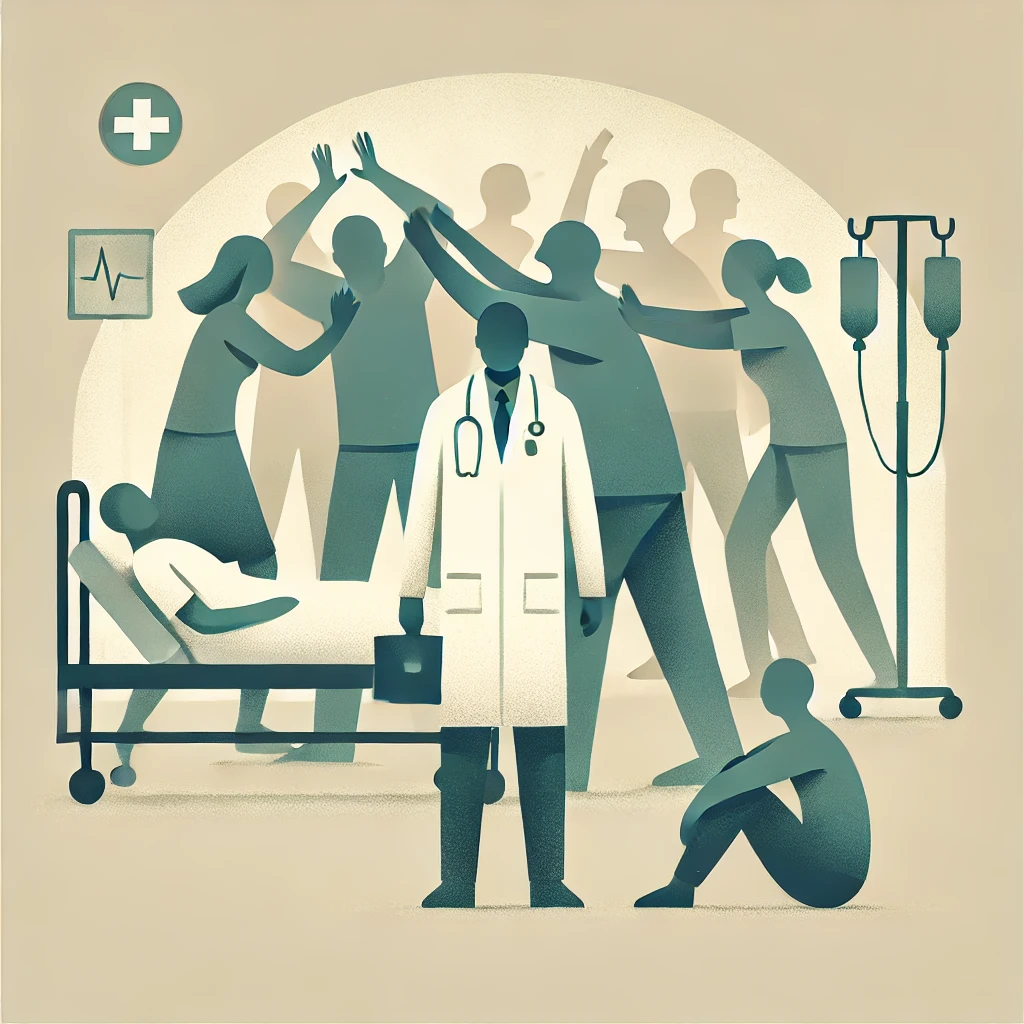
Introduction
You’ve likely been there—exhausted after a double shift, doing everything in your power to save a life, only to face anger, blame, or worse, physical violence. It’s the harsh reality of being a doctor in India today. Over 75% of us have faced some form of aggression during our practice. Despite years of dedication and sacrifice, we often find ourselves on the receiving end of frustration, mistrust, and even harm.
The Prevention of Violence Against Healthcare Professionals and Clinical Establishments Bill, 2022 brings hope to many of us in this volatile environment. But does it really address the challenges we face as medicos on the ground? Let’s dive in—from the root causes of violence to what this Bill offers and how we can make it work for us.
The Crisis of Violence in Our Profession
Being a doctor is more than a profession—it’s a calling. Yet, the challenges we face are mounting, and the violence is an alarming symptom of a broken system.
Why Does This Happen?
- Emotional Turmoil of Patients and Families:
- We know this well. Despite doing our best, the outcome of a critical patient can lead to anger, with us unfairly becoming the scapegoat.
- Overburdened Hospitals:
- Government hospitals are overcrowded, with long waits and strained resources. These delays frustrate patients, and we bear the brunt of their dissatisfaction.
- Unrealistic Expectations:
- Let’s be honest—TV dramas and media glorify our profession in ways that set us up for failure. Patients expect miracles, and when we can’t deliver, they turn against us.
- Lack of Communication:
- Breaking bad news is never easy, and medical jargon often alienates patients and families. Miscommunication leads to distrust, which can quickly escalate.
The result? A vicious cycle where we’re left to navigate not just medical emergencies but also societal unrest—alone and unprotected.
What the Prevention Bill Promises
The Prevention of Violence Against Healthcare Professionals and Clinical Establishments Bill, 2022 is an important step in recognizing our struggles. But how does it help us in real-world scenarios?
Key Provisions That Matter to Us:
- Broad Definition of Protection:
- It’s not just doctors. Nurses, paramedics, and even medical students are covered. Violence isn’t just physical—it includes verbal abuse, intimidation, and damage to our reputation.
- Strong Deterrents:
- Jail Time: Offenders can face six months to ten years in prison.
- Heavy Fines: Penalties range from ₹5,000 to ₹10 lakh.
- Fast-Track Justice:
- Cases involving violence will be fast-tracked, with investigations led by senior police officers. No more delays or dismissals.
- Mandatory Compensation:
- If property is damaged—be it a stethoscope or an entire clinic—the offender must pay double its market value.
Does This Go Far Enough for Us?
While the Bill offers some relief, it’s not a complete solution. As medicos, we need more than just legal protections—we need systemic changes that address the root causes of violence.
What’s Missing?
- Public Awareness Campaigns:
- Patients need to understand what we do, the limits of medical science, and the challenges we face.
- Better Hospital Security:
- Security guards, CCTV cameras, and access control systems should be mandatory in hospitals to protect us.
- Training for Us:
- Many of us aren’t trained to handle high-stress communication. Workshops on delivering bad news and calming distressed families can reduce tensions significantly.
- Counseling and Legal Aid for Doctors:
- Post-incident trauma is real. Support systems for affected doctors are essential, both emotionally and legally.
What’s at Stake for Us as Doctors?
The toll of violence goes beyond physical harm. It erodes our confidence, jeopardizes patient care, and creates a toxic work environment.
The Bigger Picture:
- Loss of Talent: We’ve all thought about it—leaving the country for safer opportunities.
- Risk-Averse Practice: The fear of violence may lead us to avoid high-risk cases, affecting patient outcomes.
- Burnout: The constant stress of litigation, aggression, and lack of trust takes a toll on our mental health.
Action Points for Us
So, what can we do to protect ourselves and ensure the Bill is implemented effectively?
- Document Everything:
- From verbal threats to physical violence, maintain detailed records. Evidence is critical.
- Advocate for Implementation:
- Engage with hospital administrations and local medical associations to push for the adoption of the Bill’s provisions.
- Foster Unity Among Medicos:
- Join forums, participate in discussions, and create a collective voice to demand better policies and protections.
- Educate Patients:
- Take the initiative to explain diagnoses, treatments, and outcomes to families. Sometimes, a little clarity can prevent misunderstandings.
Final Thoughts
As doctors, we dedicate our lives to saving others. The least we deserve is to feel safe in our workplaces. The Prevention of Violence Against Healthcare Professionals and Clinical Establishments Bill, 2022 gives us hope, but it’s just the beginning.
Real change will require not just laws but a shift in how society views us—beyond being “miracle workers” or “money-makers.” We are professionals doing our best under challenging circumstances.
Let’s work together to protect ourselves and ensure that the next generation of doctors can practice in a safer, more supportive environment.
Conclusion
We can’t afford to wait for the system to change on its own. Whether it’s advocating for policy reforms, improving communication with patients, or building a community of support, the onus is on us to take action. Protecting ourselves means protecting the future of healthcare
